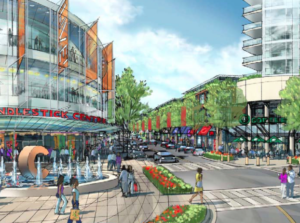
From education to the media business, there are many industries that not only need diversity but also need to be better utilized to create opportunity for Black citizens.
But as you effortlessly list of all the industries in need of a diversity overhaul, you probably skipped right over the world of design.
Initially it seems unclear as to why such a field would even be in such a great need for more Black talent but as one Harvard Graduate School of Design student and Princeton University graduate explained, design and social justice do not have to be exclusive fields.
Currently, however, they are.
“Largely taught to create objects of beauty, designers often neglect the social, political and economic implications of their work,” Dana McKinney wrote in an article published by Al Jazeera. “This is apparent in the legacy of cruciform, brick public-housing towers that have formed the backdrop of America’s low-income communities. Inspired by modernist principles, architects used these forms because they were inexpensive and quick to construct.”
So while “traditionally urban environments” were colored with a variety of unique architectural forms and neighborhoods laced with design character, affordable housing properties remain largely “monolithic, sterile, and repetitive—an oppressive environment that serves a singular class of residents.”
This is how, according to McKinney, designers actually work to “perpetuate the disenfranchisement of particular populations by offering subservient design.”
Even those who have never studied or analyzed design a single day in their lives would be able to look at a collection of random photos of communities and pretty accurately guess the income levels, race and other demographics about those who may live there.
Even when one housing project may be steps away from another community, the differences in design are usually a key indicator of who that property was meant to cater to.
But what if those contrasting designs vanished? That’s what McKinney hoped to explore during her first year of design school.
“I was tasked to design a building along the locks of the Charles River in Boston,” she added. “In addition to my formal investigation, I wanted to bridge the insular communities flanking the site.”
Two very distinct communities line the site. Along the northern riverbank, the community of Charlestown is home to large low-income Black and Asian population. Meanwhile, the North End neighborhood is characterized by a strong tourism industry and a wealthy population of Italians.
“The site had potential to connect the neighborhoods and ameliorate the residing ethnic groups’ uneasy history and income disparity,” McKinney said. “I wanted my project to help create greater social cohesion.”
Unfortunately, McKinney’s instructor shot down the idea and discounted it as a “trivial” effort. But McKinney remains adamant about putting an end to inexpensive, low quality materials being reserved for oppressed populations while the wealthy and elite bask in unique designs that are visually stunning and structurally superior than the homes that could be located just a block away.
While it isn’t exactly clear how to address such a problem, a great place to start would be diversifying the field itself. McKinney is one of “an approximate 30 black faces in a study body totaling 860” studying design at Harvard.
She hopes that by encouraging more Black people to get into the field of design, there will be more voices present from a community that is too often silenced or ignored.


